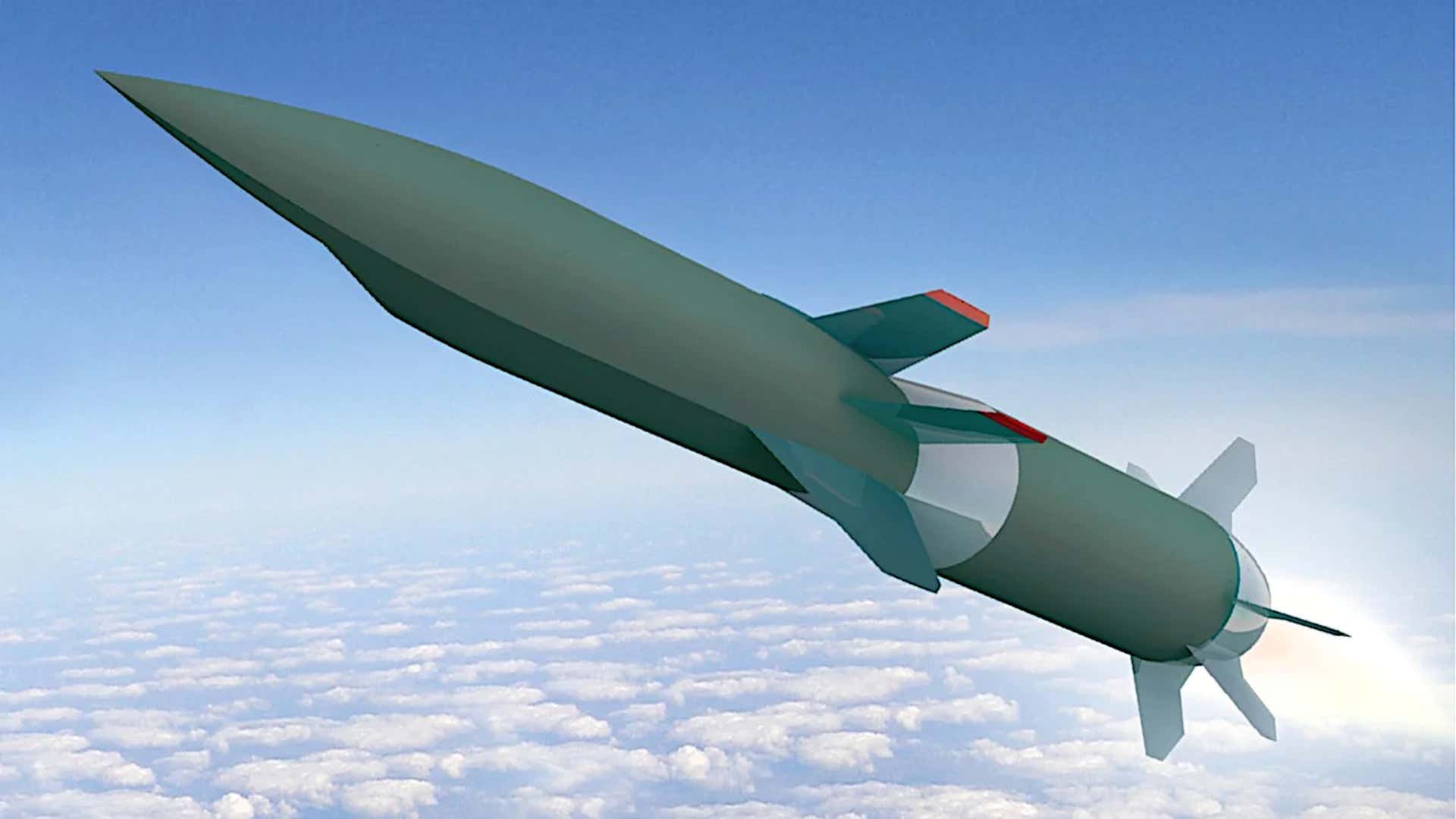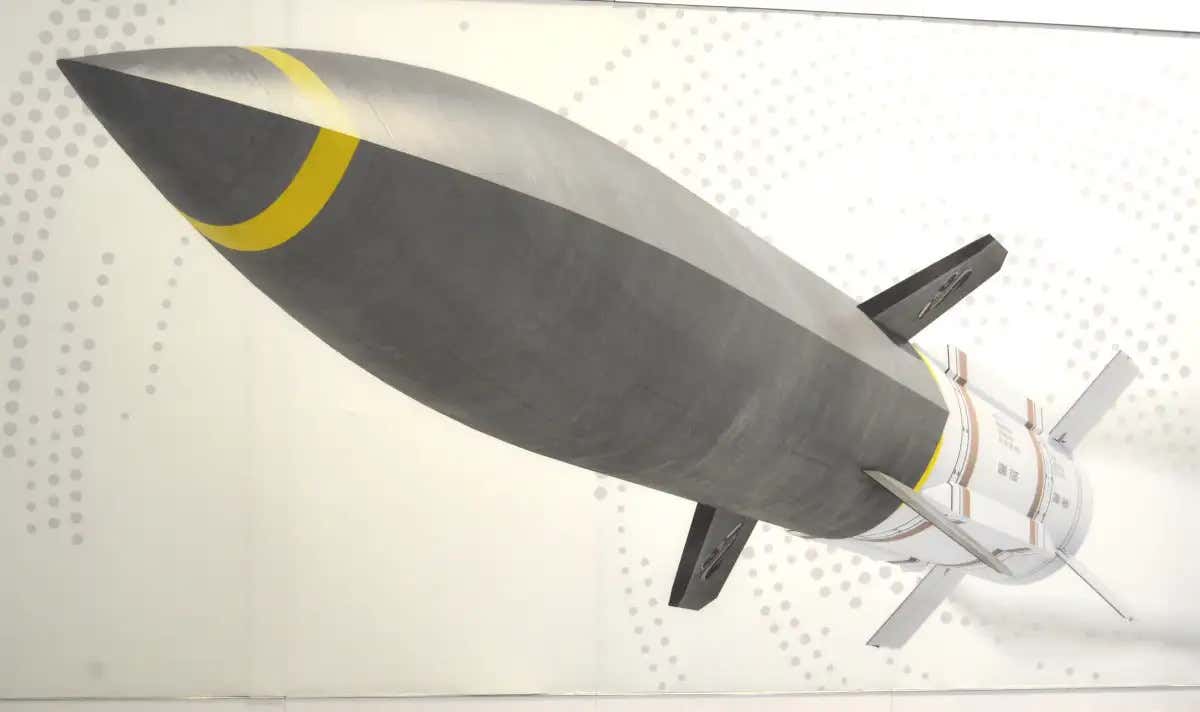The Defense Advanced Research Projects Agency has announced the successful free flight test of an air-breathing hypersonic cruise missile demonstrator developed by Raytheon and Northrop Grumman. This comes more than a year after the announcement of successful captive-carry tests of this weapon, as well as a competing design from Lockheed Martin, as part of the Hypersonic Air-breathing Weapon Concept program, or HAWC.
The announcement of this test of the Raytheon/Northrop Grumman missile came earlier today in a press release, but the Defense Advanced Research Projects Agency (DARPA), working together with the U.S. Air Force, conducted it last week. The U.S. Navy was also involved in the test. DARPA's official statement does not provide any update on any similar progress on the Lockheed Martin design.

An artist's conception of an air-breathing hypersonic missile that DARPA previously released in relation to the HAWC program.
"The HAWC free flight test was a successful demonstration of the capabilities that will make hypersonic cruise missiles a highly effective tool for our warfighters,” Andrew "Tippy" Knoedler, the HAWC Program Manager at DARPA's Tactical Technology Office, said in a statement. "This brings us one step closer to transitioning HAWC to a program of record that offers next generation capability to the U.S military."
"Goals of the mission were: vehicle integration and release sequence, safe separation from the launch aircraft, booster ignition and boost, booster separation and engine ignition, and cruise," DARPA's press release added. "All primary test objectives were met."
Details about the Raytheon/Northrop Grumman design are limited. Little information has been released as to this weapon's overall performance, as well. Hypersonic speed is simply defined as anything above Mach 5.
We do know that is the main source of power is a scramjet engine, a type of propulsion that only works effectively at very high speeds, to begin with. As such, as DARPA noted in its description of the test goals, the missile requires a rocket booster to provide an initial burst of acceleration before the scramjet kicks in.
The scramjet engine takes advantage of high-speed airflow through a combustor to produce large amounts of thrust. The underlying ramjet engine lacks the spinning compressors typically found on jet engines and instead uses inlet and internal geometry to compress and accelerate the airflow through the engine. A scramjet ups the ante compared to a ramjet by forcing the airflow inside at supersonic speeds. Fuel is then injected into the supersonic air and ignited.
Raytheon and Northrop Grumman have said in the past that the overall design of the missile leverages past work the companies have done on hypersonic aerospace vehicles, including the X-43A hypersonic test vehicle project for NASA that ran from the 1990s to the early 2000s. DARPA also specifically highlighted its past work on the Rockwell X-30 National Aero-Space Plane (NASP) project in the 1980s and 1990s.
The scramjet engine inside the Raytheon/Northrop Grumman missile is also reportedly half the weight of the one found inside the X-51 Waverider, another hypersonic test vehicle that Boeing developed for DARPA 2000s and that was flight tested in the 2010s. The test last week marks the first successful flight, at least that has been made public, of a U.S. scramjet-powered air vehicle since 2013. The fourth and only fully successful test flight of the X-51A took on May 1 of that year.
It is worth pointing out that Lockheed Martin's design follows the same general concept, using a rocket booster to accelerate the main air vehicle, which is powered by a different scramjet developed by Aerojet Rocketdyne. What was then Pratt and Whitney Rocketdyne had developed the SJY61 scramjet for the X-51A. Lockheed Martin is now in the process of trying to buy Aerojet Rocketdyne.

An artist's conception of a hypersonic missile that Lockheed Martin previously released that is related to its HAWC design.
DARPA's current plan is to wrap up the HAWC program in the 2022 Fiscal Year, which starts on Friday. At that point, the plan is, at least in part, for technologies developed under HAWC to feed into the Air Force's own Hypersonic Attack Cruise Missile (HACM) project.
HACM is just one of a number of air-launched, air-breathing hypersonic weapon programs, as well as hypersonic aircraft projects, known to be in development now within the Air Force, as well as the Navy. This includes another Air Force project known as Mayhem, which is focused more on hypersonic engine technology, and a Navy effort called Screaming Arrow. The Navy had curiously canceled Screaming Arrow, which was centered on the development of a hypersonic anti-ship missile, in March, before rebooting it last month.
It's also worth noting that DARPA had originally hoped to begin HAWC flight testing by the end of 2020 and it's not clear how mature either the Raytheon/Northrop Grumman or Lockheed Martin designs may be now. DARPA did not say whether the launch of the Raytheon/Northrop Grumman demonstrator last week was the first flight test of any HAWC air vehicle, successful or not.
Just last week, the Air Force also said it is in the process of reassessing its own hypersonic weapons plans, overall. Challenges with the AGM-183A Air-launched Rapid Response Weapon (ARRW), which is unrelated to HAWC, have been among the issues prompting this introspection. The first two flight tests of the AGM-183A, which the Air Force hopes will be the U.S. military's first operational air-launched hypersonic weapon, have failed, as you can read more about here.
“I’m not satisfied with the pace,” Secretary of the Air Force Frank Kendall said at the annual Air Force Association (AFA) Air, Space, and Cyber Conference last week. “We’re making some progress on the technology. I would like to see it be better."
At the same time, some members of Congress are pushing the U.S. military, as a whole, to make more progress with regard to air-launched hypersonic capabilities of various kinds, and air-breathing platforms in particular. A report accompanying the Senate Armed Services Committee's markup of a draft of the annual U.S. defense policy bill, or National Defense Authorization Act (NDAA), which was released last week, said, "The committee is concerned that there is a lack of focus on air-launched and airbreathing hypersonic capability."
The U.S. military, as well as many lawmakers, see hypersonic weapons as essential to preserving America's military edge in future conflicts, especially potential high-end fights against near-peer adversaries, such as Russia or China. The Russians and the Chinese are already in the process of developing and fielding their own hypersonic missiles of various types.
No matter what, work on HAWC has always been seen as just one stepping stone to the Air Force, as well as the Navy, fielding operational air-breathing cruise missiles. With this disclosure of this flight test last week, we may now begin to learn more about the exact extent of the progress that DARPA has already made in this regard.
"Occur" - Google News
September 28, 2021 at 04:41AM
https://ift.tt/3AZ6Z2k
DARPA Reveals Successful Hypersonic Cruise Missile Flight Test Has Occurred - The Drive
"Occur" - Google News
https://ift.tt/2Qqpsjw
Shoes Man Tutorial
Pos News Update
Meme Update
Korean Entertainment News
Japan News Update
Tidak ada komentar:
Posting Komentar